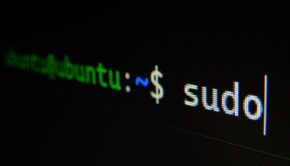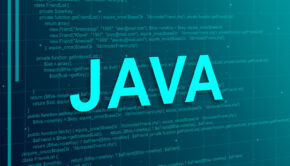10 Benefits Of Laravel Enterprise Software Development
Laravel is one of the widely accepted PHP frameworks for making custom software. Thousands of Laravel developers from all over the world, mostly from India, love the powerful features of this framework. Be it any kind of specific app development, you can use it to make websites and web apps faster, more stable and easier to keep up with. Also, it has the right tools for this.
This is why business owners these days have started relying on Laravel developers from India. Not only that it is cost-effective but there are several advantages of the Laravel framework for enterprise. One of the benefits is, it provides robust security and stores data accurately.

For instance, people who want to use your app will type the URL into their browsers. The physical server where your app is hosted will get the request, process it, and send back a response. One of the most resource-consuming things you can do is make a lot of complicated requests to the database server at once.
Table of Content:
- Introduction
- Benefits of Enterprise software development built with laravel framework
- 1. Authentication and Authorization Systems
- 2. Integration with Mail Services Via Laravel development
- 3. Integration with Tools for Making enterprise application development faster
- 4. Getting rid of the most common technical flaws
- 5. Configuration Errors
- 6. Automation of Testing Work
- 7. Configuration of URL Routing
- 8. Business Logic Code and Presentation Code will be separate
- 9. Configuration of the Message Queue System
- 10. Scheduling Tasks Configuration and Management
- Conclusion
Imagine that 1,000 or more people are reaching your applications at the same time and making requests to the database server at the same time. Having expensive tools will help you deal with them all as quickly as possible, so you should have them. In the long run, it’s much more efficient to transfer the most popular pages once so that they can be stored and you can serve future-ready web applications. This is when Laravel comes into the picture!
Laravel comes with a lot of popular cache backends like Memcached and Redis already built-in. If you want to use the file cache driver, Laravel is set up to use that. It stores cached objects in the filesystem. If you have a lot of programmes, you should use an in-memory cache like Memcached or APC. However, with Laravel, it is even possible to set up different cache configurations for the same driver at the same time.
As mentioned, there are also other advantages of laravel, let’s discuss in detail below.
Benefits Of Enterprise Software Development Built With Laravel Framework
1. Authentication and Authorization Systems
Each person who owns the web application needs to make sure that the users who use it are genuine users so that no one can get to resources that are only available to users who have paid the application subscription.
In such instances, Laravel makes it very easy to set up authentication. Most of the time, things are set up right out of the box. Laravel also makes it easy to organise authorization logic and control who can see what resources.
2. Integration with Mail Services Via Laravel development
Nowadays, it’s hard to imagine a modern enterprise web application not sending even a simple email to tell a new user that they’ve signed up for their website. This is made quicker because of Laravel.
The reason is, Laravel has a clean, simple API over SwiftMailer, which is a well-known library. It has many singular modules that support different object oriented libraries. Laravel also has drivers for SMTP, Mailgun, Mandrill, SparkPost, Amazon SES, PHP’s “mail” function, and “sendmail,” which make it easy for an application to send mail through a local or cloud-based service quickly. In addition to sending emails with Laravel, you can send notifications to a number of different places, including SMS (via Nexmo) and Slack.
3. Integration with Tools for Making enterprise application development faster
When you are working on laravel web development, it is important not just to make an app but also to make it fast, which will help your business make more money. If you want to improve the performance of your web app, you might want to connect it with a “caching backend.”
Memcached and Redis are two of the most popular cache backends out of the box. More than any other PHP frameworks, Laravel is set up by default to use the file cache driver, which stores cached objects in the file system. By default, this driver is used. If you have a lot of programmes, you should use an in-memory cache like Memcached or APC. However, with Laravel, it is even possible to set up different cache settings.
4. Getting rid of the most common technical flaws
Every time you build a web app, you have to think about how to keep it safe. The OWASP Foundation, a non-profit group organization in the United States, talks about the most important web application security flaws. The web lopers must not forget and be able to fix all of them before he or she sends the product out.
Laravel helps protect the web application from the most dangerous security threats such as, SQL injection, cross-site request forgery, and CSRF. The testing software are safe. There is a lot of attention paid to the codebase, and the codes are checked by a lot of people.
5. Configuration Errors
The way a software development application deals with errors can have a big impact on how users feel about the application and how easy it is to use. Data-entry forms are one of the places where mistakes are found and shown to people after they click a Submit Button.
If the user does something wrong and something doesn’t work, he or she should be told about it in a way that is easy for them to understand. If a user’s action can’t be completed because the user gave the wrong information, it should be told to him or her in a clear error message.
When there isn’t good error handling, a user might think that the problem with the application is that it’s broken and never use the application again. No one wants to lose their customers or make their customers angry or upset.
It’s a good thing about Laravel that error and exception handling is already set up for any new Laravel project. In addition, Laravel comes with the Monolog logging library, which lets you use a lot of powerful log handlers.
6. Automation of Testing Work
Everyone, even the developer, can’t be sure that the software will work without any problems or errors, and that it will meet the needs of the original application if it hasn’t been tested and checked. There are many times when automated tests are faster than manual tests, and they can be more accurate.
Laravel is a good thing. Tests are a big part of how Laravel was made. In fact, support for testing with PHP-Unit is already built in. A phpunit.xml file has already been set up for the application. The framework also comes with helper methods that make it easy to test applications in a variety of ways. It makes it easy to figure out how people will act in the beginning (making requests to the application and examining the output, for example, clicking links, filling out forms).
7. Configuration of URL Routing
Users will use a web app by clicking or typing links. When they visit, they will look for what they want, such as an article, a contact form, a product description, and so on. This means that the web application won’t know what the user wants to see if there is no URL routing. Instead, it might show the user a blank page or an error page.
All routes in Laravel come from a single file called app Http routes PHP. This file is automatically loaded by Laravel. The most basic Laravel routes only need a URI and a Closure to be defined. This is a very simple and expressive way to write routes.
8. Business Logic Code and Presentation Code will be separate
Html Layout Designers (who aren’t very expensive) can easily change the look of a web page without having to talk to Developers (more expensive). As soon as the web application is built, all the programming code should be separated into different parts. This way, developers can fix bugs and add new features more quickly and cost-effectively.
Laravel is an MVC framework, which means that the separation is already done for you.
9. Configuration of the Message Queue System
It’s not just about simple emails. There are a lot of ways to communicate between different parts of the app or between different apps. Getting more traffic to a web application means that it has to deal with a lot more requests per second. Cloud hosting, for example, can be very expensive.
Nobody likes to be in situations like this. The message queue system, as well as other techniques for balancing traffic, speeding up the application, and keeping data safe, could be used at the start of a project to avoid this.
The Laravel queue service has a single API that works with a lot of different queue backends. Queues let you put off a task that takes a long time, like sending an e-mail, until later, which speeds up web requests to your application.
10. Scheduling Tasks Configuration and Management
There must be a way to make sure that tasks get done when they need to be done, whether that means sending out emails to subscribers in the morning or automatically deleting database tables at the end of each day to make the web app faster and cut costs on hosting.
In the past, developers have made a Cron entry for each task they need to set a time for. However, this is a pain. There is no longer a source control system for this task schedule, so developers must go into the server and SSH into it to add the Cron lines.
Using the Laravel command scheduler, you can set up your command schedule quickly and easily inside Laravel, and only one Cron entry needs to be made on the server.
Conclusion
Laravel has a lot of other features, like a service Container, event broadcasting, and many more, that make it the best framework for making big business apps.
Many businesses and industries such as the internet, telecom, shopping, arts, entertainment, and so on, use enterprise software built with the support of laravel development service. Enterprises also use the microservices architecture of the laravel framework to make apps that are safe, scalable, and fast.
















